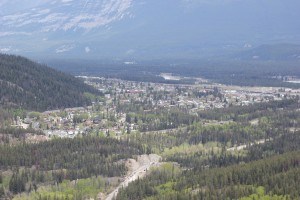
When it comes to Jasper’s fiscal health politicians and bureaucrats are always quick to frame the problem as a revenue issue, but that’s only half the problem.
In order to have a revenue problem there are several factors that have to come into play, the least of which is the municipality’s propensity to spend more than it generates year after year.
It would be one thing if the money it spent was necessary, but it’s clear from the municipality’s budgets that it might actually have a spending problem.
Those in administration will immediately balk at this suggestion claiming that the town manages to do a lot with very little, especially considering that Jasper’s tiny tax base has to support more than two million visitors annually.
While this is a valid argument it ignores the elephant in the room. Its own spending habits.
Take for instance the town’s recent desire to host the Tour of Alberta. For $50,000 the town gets to spend the day watching some of the best athletes in the world race through Jasper National Park. A sporting event might be entertaining to watch and provide international exposure for Jasper, but is it a necessity?
On the capital side of things, the wish list presented by administration is even more glaring.
A quick glance at the items included in the capital budget for 2017 include $200,000 for new way finding signs, $300,000 to redesign the Miette/Turret intersection and $35,000 to provide the bike park with water. All of which will eventually have to be paid for by the taxpayer, if council approves the final budget in the spring.
To cover the escalating costs, property taxes have increased by 18.5 per cent since 2012 and if council passes this year’s budget, taxes will increase by another 3.01 per cent.
Instead of looking at its own books to find savings or different ways to generate revenue, the municipality wants the province to recognize its unique situation as a tourism-based community and provide it additional revenue tools or agree to a new revenue sharing agreement.
The problem is the province is already facing its own financial crunch with an estimated provincial deficit of $10.8 billion in 2017 and it isn’t likely to give up any more money.
That leaves Jasper only three other options: implement new taxes such as a consumption levy (if the province allows it), increase or implement new user fees such as paid parking, or the simplest and easiest solution: cut spending.
While we support the town’s lobbying efforts to gain additional revenue tools or negotiate a new revenue sharing agreement with the province, we also recognize this is a tall order given the province’s fiscal health, which is why we believe the municipality needs to do its part and cut costs.
